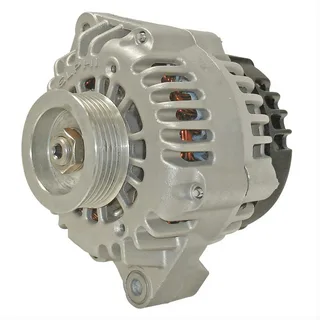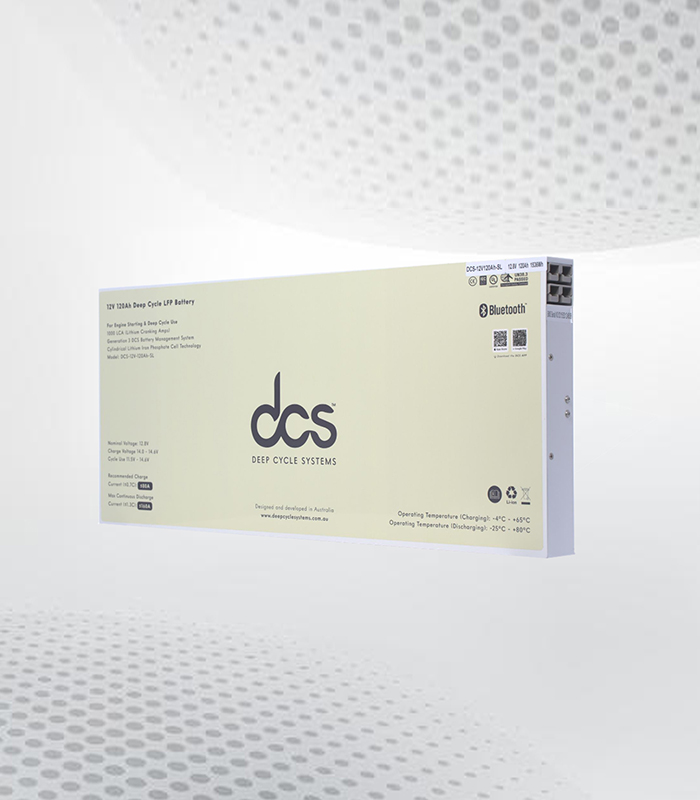If you’re a proud owner of the 2005 Honda CR-V, you know that this versatile compact SUV has carved a special place in the hearts of drivers everywhere. Known for its reliability and efficiency, it’s no wonder why so many people have made it their trusted companion on the road. But what happens when your trusty ride starts showing signs of electrical trouble? Enter the heart of your car’s electrical system—the alternator! In this blog post, we’ll dive deep into the performance of the Honda CRV 2005 Alternator.
What is a CRV alternator, and what is its role in a car?
The Honda CRV (Compact Recreational Vehicle) is a popular crossover SUV known for its reliable performance. One crucial component contributing to this reliability is its alternator. But what exactly is an alternator, and why is it so important in a car? In this section, we will delve deep into understanding the function and role of an alternator in a car, specifically in the Honda CRV.
Simply put, a CRV alternator is an electrical generator that converts mechanical energy into electrical energy. It works alongside the battery to power various systems in a vehicle, such as lights, heating/cooling systems, audio equipment, and other accessories. The alternator also ensures that the battery remains charged while the engine runs.
In the Honda CRV, the alternator performs two primary functions—supplying electricity to power all electronic components and charging the battery when needed. This makes it an essential component for the vehicle’s proper functioning.
The most significant advantage of having an alternator in your car is that it does not rely on any external energy source like solar or wind power. Instead, it utilises rotational force generated by the engine’s crankshaft to produce electricity. As long as your car’s engine runs, you can be assured that your electrical systems will have enough power to function effectively.
Common issues with the Honda CRV Alternator Replacement
The alternator is an essential vehicle component, including the Honda CRV. It plays a crucial role in keeping the battery charged and powering various electrical systems while the car runs. However, like any other part, it can experience issues over time, leading to the need for replacement.
In this section, we will discuss some common issues owners may face when replacing their Honda alternator.
1. Premature Failure
Premature failure is one of the most common issues with Honda Crv Alternator Replacement. This occurs when the new alternator fails soon after installation, causing frustration and inconvenience for car owners. There could be several reasons, such as faulty parts or improper installation. Getting your alternator from a reputable brand and installing it with a certified mechanic is essential to avoid this issue.
2. Incompatibility Issues
While shopping for an alternator replacement, it is crucial to ensure that you get one that is compatible with your Honda CRV model year and engine size. Using an incompatible alternator could cause problems with fitting or performance in the long run.
3. Belt Alignment
A significant aspect of installing a new Honda alternator is ensuring proper belt alignment. If not done correctly, it can lead to tension on the pulleys, causing damage to other components such as belts or bearings.
Tips for maintaining a healthy alternator
One key tip for maintaining a healthy alternator is to regularly inspect it for signs of wear and tear. This can be done by checking the connections, belt tension, and overall condition of the alternator. If there are any visible damages or irregularities, it is important to address them immediately before they develop into bigger issues.
2. Keep It Clean:
The alternator is often exposed to dust, debris, and other elements that can affect its performance. As such, keeping it clean by regularly removing any dirt or grime buildup on its surface is essential. This can be done using a soft cloth and a mild detergent solution.
3. Tighten Connections:
The connections between the battery, alternator, and starter should always be tight and secure. Loose connections can cause electrical problems that could potentially damage the alternator or other components in the system. Make sure to check these connections periodically and tighten them if needed.
4. Avoid Overloading:
Another important tip for maintaining a healthy alternator is to avoid overloading it with too many electrical accessories or plugins at once. This can strain the alternator’s capacity unnecessarily and lead to potential failures or malfunctions.
5. Use Quality Parts:
When replacing parts in your Honda CRV’s charging system, use high-quality parts from reputable brands. Cheap or inferior-quality components may save you money initially but could end up causing more harm than good in the long run.
Steps to troubleshoot a faulty Replacement CRV Alternator
The alternator is essential to any vehicle’s electrical system, including the Honda CRV. It converts mechanical energy from the engine into electrical energy to power various systems, such as lights, radios, and charging the battery. However, alternators can become faulty over time and usage and need replacement.
If you suspect that your replacement CRV alternator is not functioning correctly, there are steps you can take to troubleshoot the issue before seeking professional help. Here are some steps you can follow:
Step 1: Check for visible signs of damage or wear
Before starting the engine, visually inspect the replacement alternator for any apparent signs of damage or wear. Look for loose connections or frayed wires that may be causing issues with its performance. If everything looks OK, move on to the next step.
Step 2: Conduct a voltage test
Using a multimeter set to DC volts, connect one end to your battery’s positive terminal (+) and the other to any positive wire connection on your replacement alternator. Start your engine and let it idle while observing the voltmeter readings. The voltage should be between 13 and 14 volts; anything lower indicates a problem with your alternator.
Step 3: Check belt tension and condition
A loose or damaged serpentine belt can affect the functioning of your replacement alternator. Ensure it is tight enough but still has some movement when pressed with moderate pressure. Additionally, check for any cracks or fraying in your belt that could hinder its effectiveness.
Step 4: Test individual components
If all previous tests have been inconclusive, it’s time to test individual components of your CRV’s electrical system independently. This includes checking fuses, relays, and connections associated with your headlights or stereo system separately. This step can help isolate the issue and narrow down potential problems.
Replacing the Honda Alternator
The alternator is an essential component of any car’s electrical system, responsible for keeping the battery charged and powering the various electrical systems in your vehicle. Like any other part, it may start to show signs of wear and tear over time and eventually need to be replaced. This section will discuss everything you need to know about replacing the alternator in your Honda CRV.
If it turns out that your alternator needs replacement, here are the steps you can follow:
Step 1: Gather all necessary tools and supplies
Before starting any car repair job, it is essential to have all the required tools at hand. For replacing an alternator in a Honda CRV, you will need a socket set with extensions (preferably metric), flathead screwdriver or needle-nose pliers, new belts (if they also need replacement), ratchet wrenches, and gloves.
Step 2: Disconnecting the negative battery cable
This step ensures safety while working on electrically powered components like an alternator. Using a wrench, locate and disconnect the negative terminal on your battery.
Step 3: Remove all necessary components blocking access
To remove the old alternator from its mounting location at the top engine block near one side of your front fender under-hood area, you may have to remove some other items first, such as air filters or intake tubing, if necessary.
Step 4: Unplug electrical connections
Carefully unplug all wires leading to or from the alternator. It is essential to track where each wire goes for easy reconnection later.
Step 5: Remove the old alternator
After disconnecting all wires, remove the bolts securing the alternator in place using a ratchet wrench.
Step 6: Install the new alternator
Place the new alternator in position and secure it with the bolts removed earlier.
Step 7: Reconnect electrical connections
Carefully plug back all electrical wires disconnected earlier, ensuring they are correctly connected to their respective terminals.
Step 8: Replace any other removed components
If you had to remove any other parts during Step 3, now is the time to put them back in place.
Step 9: Reconnect your battery cable
Reconnect your negative battery cable and start your car. Congratulations, you have successfully replaced your Honda CRV’s alternator!
Diagnosing the Honda CRV Alternator Issues
Diagnosing issues with the alternator on your Honda CRV can be tricky, as several components and systems work together to keep it functioning correctly. However, with some basic knowledge and understanding of how the alternator works, you can quickly identify and address any potential issues before they become more significant problems.
1. Start with a Visual Inspection:
The first step in diagnosing any issue with your Honda CRV alternator is to perform a visual inspection. Begin by opening the hood and checking for any signs of damage or wear on the alternator, such as frayed wires or loose connections. Look at the belts that connect the alternator to other components in the engine; if they appear cracked or damaged, it may be time for a replacement.
2. Check Battery Voltage:
A low battery voltage is one of the most common symptoms of an alternator problem. You can use a multimeter to check your battery’s voltage; it should read around 12 volts when the car is turned off and between 13-14 volts when running. If your readings are significantly lower than this, it could indicate an issue with the alternator charging system.
3. Test Alternator Output:
Another way to determine if your alternator is functioning properly is to test its output using a multimeter. With the engine running, place one probe on the positive terminal of the battery and one on the positive terminal of the alternator; if everything is working correctly, you should get a reading between 13 and 14 volts.
Conclusion
The Honda CRV 2005 alternator is a vital component in the smooth functioning of your vehicle, and understanding its performance can save you from unexpected breakdowns and costly repairs. By following these tips, you can ensure that your alternator stays in top condition and provides reliable power to all essential systems in your car. Regular maintenance and care for your Honda CRV’s alternator will save you money and keep you safe while on the road. With proper knowledge and care, the Honda alternator can continue performing at its best for years.
FAQS
1. What is an alternator?
An alternator is a crucial component of your car’s electrical system. It converts mechanical energy into electrical energy to power the various electrical systems in your vehicle while running. It charges your battery and powers the headlights, radio, air conditioning, and other essential components.
2. How does the Honda alternator work?
The Honda alternator uses a traditional three-phase permanent magnet rotor design. A belt connects the engine crankshaft to the alternator pulley, which causes the rotor to rotate when the engine runs, creating electricity through electromagnetic induction.
3. How long does a Honda CRV 2005 alternator last?
The lifespan of a Honda CRV 2005 alternator varies depending on usage and maintenance but typically lasts between 100,000 to 150,000 miles or around seven years before needing replacement. However, driving habits and environmental conditions can also affect its longevity.
| Related Business Listings |
| Contact Directory |
| Local Business Profiles |




